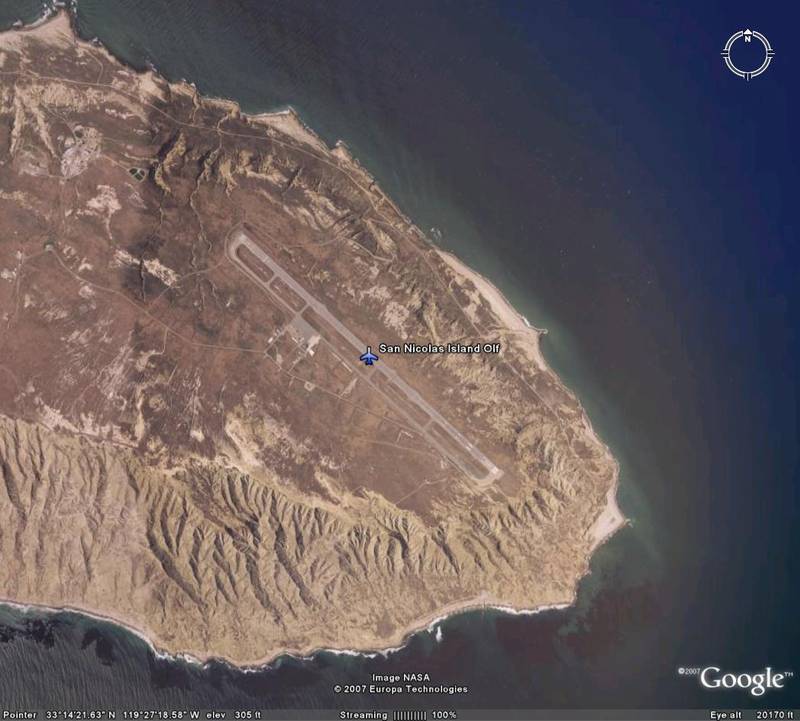
San Nicolas Island, approximately nine miles long and four miles
wide, lies in the Santa Barbara Channel 75 miles west of Los Angeles.
The island, first discovered in 1543 by the Spanish explorer Ferrer,
received its present name when sighted by Vizcaino on Saint Nicholas's
Day, December 6, 1602. Local Indians were present until 1835 when
they were moved to the mainland by the government. During the
1800s, smugglers used the island to avoid custom duties. The island
was also used by fisherman, as well as for sheep and goat grazing.
Although low scrub oaks originally covered the landscape, most
were destroyed by the goats.
In the 1920s or early 1930s, the CAA built two emergency dirt landing strips 2300 and 2100 ft. long. In January 1933, the CAA relinquished the airstrips as the Navy took over ownership of the island. In 1939, a Naval weather station was established issuing daily weather reports to NAS San Diego.
In late 1942, the U.S. Army Air Corps determined a requirement to build an interceptor base for the air defense of Southern California. The Navy gave the Army permission to build the base providing the Navy could also use the facility. By the time construction reached completion, the Army no longer had a need for the base turning it over to the Navy. Used for patrol aircraft, training, and other activities, the station commissioned on September 26, 1944, an auxiliary of NAS San Diego. In November 1944, ACORN 46 trained at the station followed by ACORN 45. The ACORNS, Seabee units from Port Hueneme, built and operated small advanced air bases. PB4Ys from Camp Kearny used the base for training and staging until the end of the war. Carrier aircraft from Southern California stations also utilized the airfield for training.
NAAS San Nicolas consisted of the island's entire 13,370 acres. The airfield's single Army-built 6250 x 150-ft. runway had several hardstands. Station complement numbered 121 officers, 312 enlisted men, and nine civilians with barracks for 100 officers and 346 enlisted men. A 30-man dispensary and an auditorium with a 300-person capacity also existed. The station aircraft were usually a Grumman J4F Widgeon amphibian and a TBF Avenger.
Following the war, the Navy decided to locate all testing of pilotless aircraft and missiles on the West Coast. The site chosen was Pt. Mugu, 65 miles northwest of Los Angeles. San Nicolas Island was a major factor in this choice since it was an ideal location for placement of radar and telemetry equipment to observe missile testing in Pt. Mugu's 100-mile long range. Initially, the Navy spent $5 million upgrading the facilities. San Nicolas was officially disestablished as an NAAS on December 15, 1946, becoming an Auxiliary Landing Field of Pt. Mugu.
Today, San Nicolas is an integral part of the Pacific Missile Range. In the intervening years, the runway has been improved and extended to 10,000 ft. Besides radar and telemetry facilities, the island also has several target sites used in missile testing.
Copied with the permission of the author from United States Naval Air Stations of World War II.

Extract, US Army Air Forces Directory of Air Fields (January 1945)

